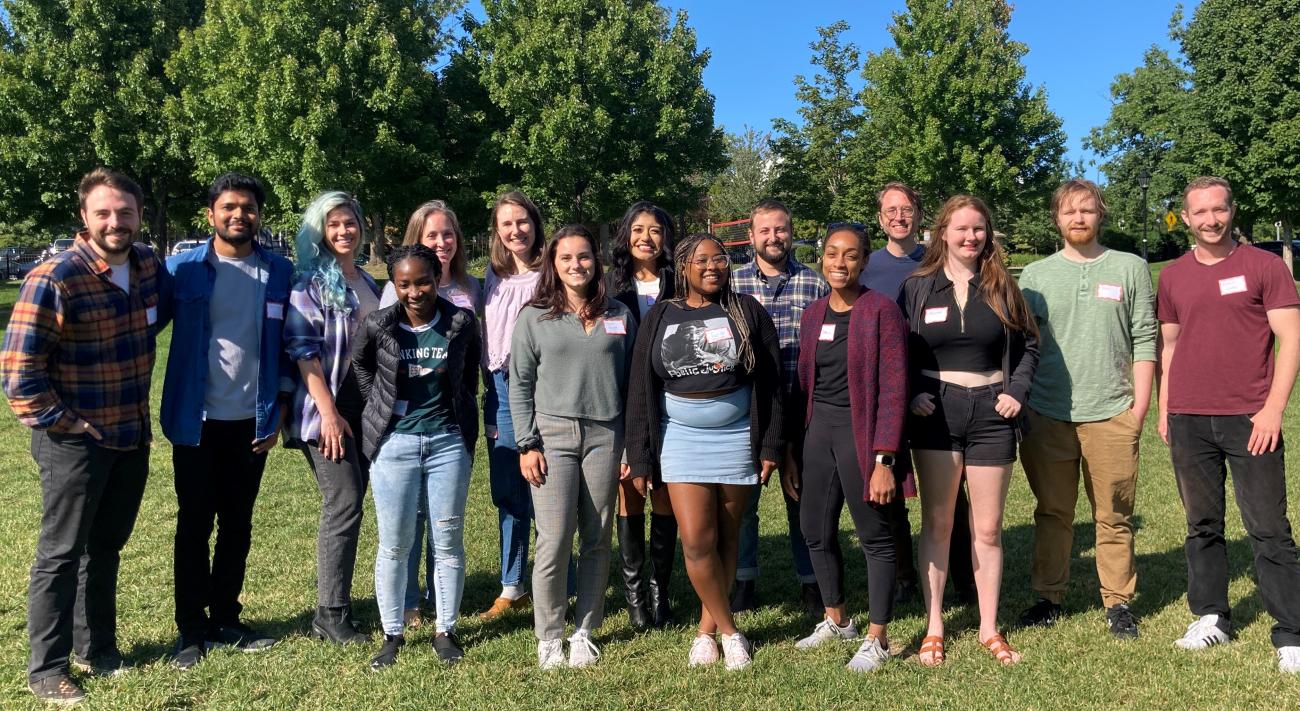2023-2024 Therapeutic Sciences Graduate Students

Kurtis Lab
I am working in the Kurtis lab with the mission to combat P. falciparum malaria. Malaria continues to be a leading global infectious disease, claiming the lives of over 1,000 children daily. Our research is focused on developing vaccines, small-molecule drugs, and monoclonal antibodies designed with novel targets in mind, such as PIGARP.
Fawzi Lab
I am interested in studying the atomic detail of small chemical and environmental changes to aggregation-prone proteins, including huntingtin, MAPT, and Sup35.
Lawler Lab
I am currently investigating the effects of drugs on chemosensitivity and blood brain barrier permeability for treatment of Diffuse Intrinsic Pontine Glioma(DIPG). DIPG is a highly invasive pediatric brain tumor that affects children with a median age of 6-7 years old. There are currently no therapies that target invasion and a major obstacle for treatment is the blood brain barrier(BBB) which prevents the delivery of effective concentrations of drug into the brain. In the Lawler lab, we are working to provide a potential new therapeutic approach for the treatment of DIPG blocking invasion and enhancing drug delivery across the BBB.
O'Connor-Giles Lab
My research focuses on a newly identified regulator of synaptic growth and function, TRMT9B. I’m using genetic, transcriptomic and biochemical approaches in Drosophila to explore how TRMT9B promotes nervous system development and function, with a focus on its role in stress resistance.
Lab Rotation
Fawzi Lab
I am interested in understanding the mechanisms of interaction and RNA granule association of TDP-43, an intrinsically disordered protein associated with several neurodegenerative diseases including ALS, frontotemporal dementia and Alzheimer’s Disease. More specifically, I use biophysical and biochemical techniques like NMR spectroscopy to study how structure and disease mutations in TDP-43 affect phase separation and aggregation.
Zhou Lab
Vascular remodeling is a prominent phenotype of Pulmonary Hypertension (PH), a deadly condition with unknown causes and no known treatment. Using in vivo models of pulmonary vascular disease, our lab has identified CHI3L1 and its receptors as major contributors of PH responses. My goal is to study the mechanisms that underlie vascular remodeling in PH and develop nanoparticle-based drug delivery systems against CHI3L1 and its receptors to treat vascular remodeling in PH.
Abdelfattah Lab
I engineer proteins to serve as genetically encoded fluorescent sensors for studying the physiology and pharmacology of the brain. My projects include developing a new generation of genetically encoded voltage sensors, neuropeptide and neurotransmitter sensors, and a protein based gene delivery system for studying neural networks.
James Lab
Lawler Lab
Larschan Lab
Aizenman Lab
Atypical sensory perception is common throughout neurodevelopment disorders (NDDs) and can negatively impact cognitive processes that rely on the integration of information from multiple sensory modalities. The focus of my research is to draw comparisons in visual circuit development, synaptic plasticity, and multi-sensory integration between normal and NDD conditions by probing nervous system function of Xenopus tadpoles using electrophysiology and in vivo imaging, which will help improve the current understanding of how abnormal circuitry arises in the context of NDD.
Lisi Lab & Rubenstein Lab
Fawzi Lab
Protein liquid-liquid separation (LLPS) is a captivating phenomenon in cellular biology where certain proteins, often intrinsically disordered, spontaneously assemble into liquid droplets within cells, resembling the separation of oil and water. These dynamic biomolecular condensates, driven by a delicate balance of attractive and repulsive forces, serve as hubs for various cellular processes, including transcriptional regulation and stress response. LLPS has implications beyond cellular organization, playing a crucial role in several neurodegenerative disorders. My goal is to understand LLPS, exploring fresh perspectives on cellular organization and potential therapeutic avenues.
Fawzi Lab
My research focuses on understanding the role of Intrinsically Disordered Proteins in neurodegenerative diseases, and characterizing the structural and residue specific contributions to complex assemblies such as biomolecular condensates.
Shukla Lab
The Shukla lab for Designer Biomaterials works at the intersection of biomaterials science and biomedical engineering to develop "smart biomaterials" with stimuli-responsive and targeted properties for clinical applications. My research focuses on designing targeted drug delivery systems for the treatment of fungal infections.
Accornero Lab